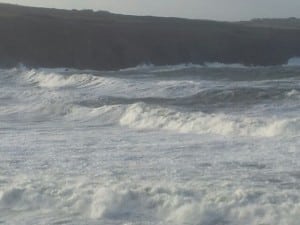Taken from my lecture on The Tempest. The full Tempest Lecture text is available here.
 The Sea / Storm
The Sea / Storm
The sea can act as a powerful image of destructive power, as in Titus Andronicus: ‘I stand as one upon a rock / Environ’d with a wilderness of sea’.
In Pericles it functions as an image of the anger and power of the gods. The shipwrecked Pericles pleads:
Yet cease your ire, you angry stars of heaven!
Wind, rain, and thunder, remember earthly man
Is but a substance that must yield to you’ (2.1. l.1-3)
Thomas Nashe pointed to the cosmic implications of storms, which human beings pick up on instinctively, ‘Who heareth the thunder, that thinks not of God’.
In romance tradition the sea often separates loved ones; shipwreck is a popular motif. Think of Twelfth Night for example. Shakespeare exploits the drama inherent in the shipwrecks of romance but also makes symbolic use of the power of the sea and the storms often associated with it. In The Tempest the storm acts as an image of chaos, reflecting the uncertainty of political and other kinds of power (magic, patriarchal family, art). The Boatswain’s language reflects this, telling Antonio (the usurper), ‘You do assist the storm’, ‘What care these roarers for the name of king?’ Social and political disorder is figured in the plot to kill Alonso, Caliban planning to kill Prospero. Miranda reads the storm as a portent of chaos, expecting chaos and suffering to follow.
In King Lear the storm is a projection in the macrocosm (outer world) of the tempest in the microcosm (inner world). Lear hears thunder and knows that what he’s feared will come – ‘I shall go mad’. The storm symbolises the mental disintegration of Lear himself but also the break-up of society and the threat to the universe itself under the impact of ingratitude and treachery, both personal and political.
The storms in Twelfth Night and Lear are of course natural. What is particularly interesting in The Tempest is that Prospero causes the storm, providing a clear and powerful link between his magical powers and the natural world. Prospero declares, ‘To the dread rattling thunder / Have I given fire,’ suggesting god-like power. The Tempest explores the need for order, in nature, human life and art. The storm itself provides a structuring metaphor for chaos and human helplessness.
Leave a Reply
You must be logged in to post a comment.